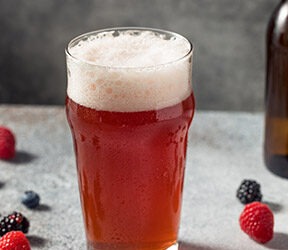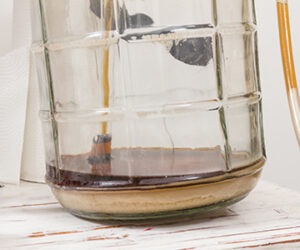Brewing with Spices for Beginners
Spices allow for countless variations and experiments in homebrewing — in styles that require it like pumpkin ales and Belgian wits, to saisons or wheat recipes that you may want to add complexity and your own twist to.
When developing a spiced beer, the first step is to determine what role you want the spice to play. Do you want a subtle taste of coriander for complexity, lemongrass to boost the nose, or are you going for a
hibiscus taste that will be the star of the show?
Generally, spices are added with a couple minutes left in the boil or during secondary fermentation. Add-ing them late to the boil will extract the flavor quickly without blowing off all of the volatiles at the expense of the aroma, as can happen if you add them too early. Some spices, however, are harder to extract flavor from and will need longer in the boil. The other popular option is to add spices in the secondary, which will take longer to extract the flavor and aroma, but allows you to better control the spicing level and adds a fresher flavor and aroma to the beer. If you do this, you’ll want to sample the beer periodically after adding your spices to the secondary. The spices will sink to the bottom and when the beer is just right, rack it off the spices and bottle or keg.
As is true with all ingredients, but especially with spices, balance is the key. Consider your entire recipe — it may be that you will want to reduce the amount of hops or specialty malts so they complement the spice instead of compete with it.
You also need to be sure that your mix of spices complement each other. Some spices, like ginger or cardamom, can easily steal all of the attention from others like cinnamon and nutmeg in your winter ale if you aren’t careful; and all of these spices can easily unbalance a great beer if too much is added.
Trial and error is the best way to determine how much of each spice to add. Start with small additions and work your way up — it is easy to add more of a spice, but not so easy to neutralize one’s impact if you add too much. If you don’t want to experiment with a full 5-gallon (19-L) batch, try splitting it. If you have 1-gallon (4-L) fermentation jugs, then a single batch of wort can be turned into five different spicing trials. When dealing with very small quantities of spices for your trials, a trick is to dissolve a larger amount of the spice in water and add the liquid mixture. For instance, if you want to add the equivalent of 1⁄4 teaspoon per five gallons (19 L) in a 1-gallon (4-L) trial, then boil 5 oz. (142 g) of water, add 1⁄4 teaspoon and then add 1 oz. (18 g) of the solution to your 1-gallon trial. Take detailed notes of each trial, (spice selections, amounts, times, etc.) so when you find the right combination you can replicate it.
Another spicing option is making an extract of each spice. Jamil Zainasheff suggests in his “Style Profile” column from December 2007 on winter spiced ale to add spices to a half-pint (237 mL) mason jar about half full with vodka and aging it several days. The alcohol acts as a solvent to extract color, flavor and aroma from the spices. Jamil warns, however, that while this works well with many styles it should be used more to tweak the spice character, not as the sole source of spice notes.
Also keep in mind there is a difference in taste and aroma between fresh and dried spices. Try both and see which you prefer, but don’t assume they can be substituted for each other if you are trying to replicate a previous recipe. Lastly, like hops, spices can have a different potency depending on the source and climate they are grown in. So, again, bench trials are important!



